The AMD Ryzen Threadripper 1950X and 1920X Review: CPUs on Steroids
by Ian Cutress on August 10, 2017 9:00 AM ESTGrand Theft Auto
The highly anticipated iteration of the Grand Theft Auto franchise hit the shelves on April 14th 2015, with both AMD and NVIDIA in tow to help optimize the title. GTA doesn’t provide graphical presets, but opens up the options to users and extends the boundaries by pushing even the hardest systems to the limit using Rockstar’s Advanced Game Engine under DirectX 11. Whether the user is flying high in the mountains with long draw distances or dealing with assorted trash in the city, when cranked up to maximum it creates stunning visuals but hard work for both the CPU and the GPU.
For our test we have scripted a version of the in-game benchmark. The in-game benchmark consists of five scenarios: four short panning shots with varying lighting and weather effects, and a fifth action sequence that lasts around 90 seconds. We use only the final part of the benchmark, which combines a flight scene in a jet followed by an inner city drive-by through several intersections followed by ramming a tanker that explodes, causing other cars to explode as well. This is a mix of distance rendering followed by a detailed near-rendering action sequence, and the title thankfully spits out frame time data.
There are no presets for the graphics options on GTA, allowing the user to adjust options such as population density and distance scaling on sliders, but others such as texture/shadow/shader/water quality from Low to Very High. Other options include MSAA, soft shadows, post effects, shadow resolution and extended draw distance options. There is a handy option at the top which shows how much video memory the options are expected to consume, with obvious repercussions if a user requests more video memory than is present on the card (although there’s no obvious indication if you have a low-end GPU with lots of GPU memory, like an R7 240 4GB).
To that end, we run the benchmark at 1920x1080 using an average of Very High on the settings, and also at 4K using High on most of them. We take the average results of four runs, reporting frame rate averages, 99th percentiles, and our time under analysis.
All of our benchmark results can also be found in our benchmark engine, Bench.
MSI GTX 1080 Gaming 8G Performance
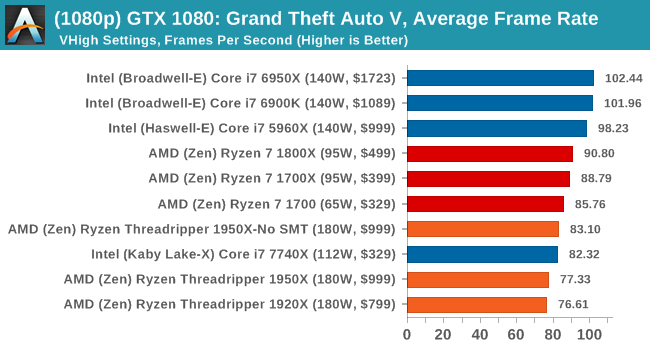
1080p

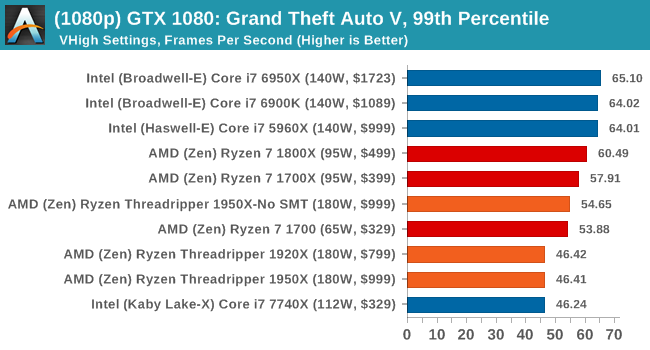
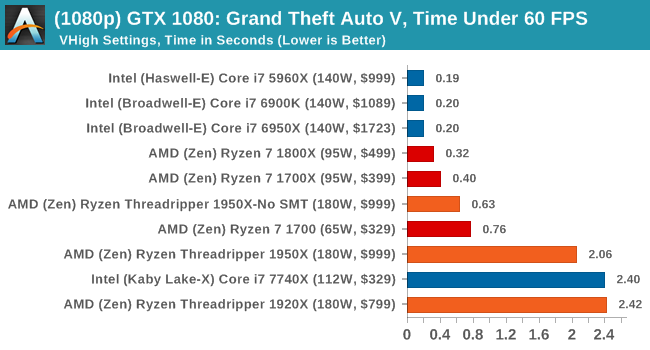
4K

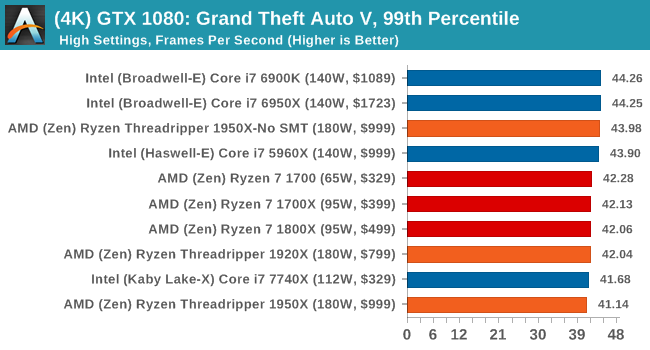

ASUS GTX 1060 Strix 6G Performance
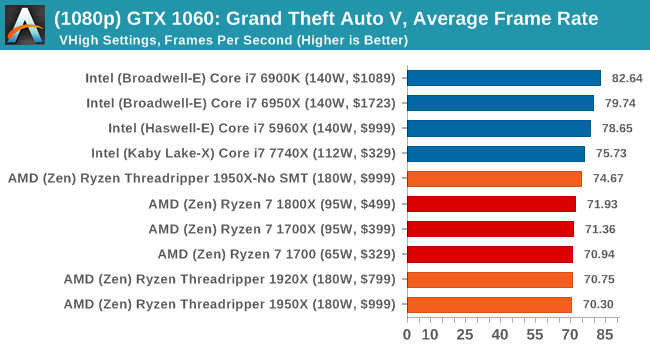
1080p

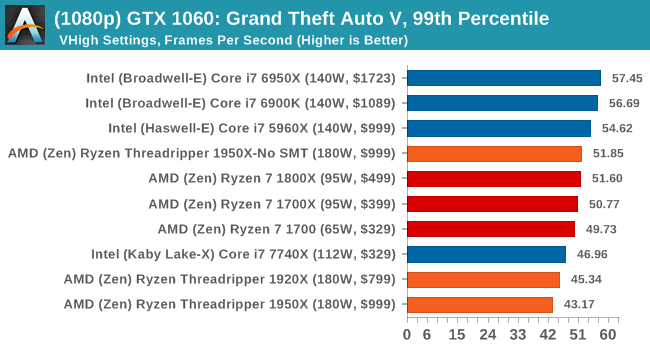
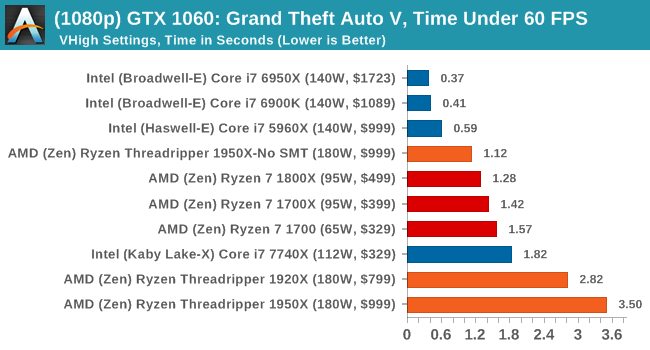
4K

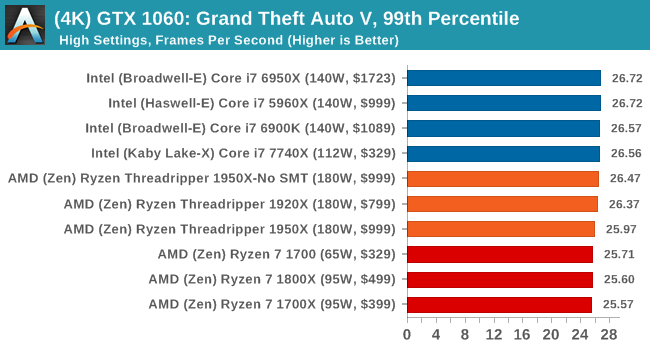
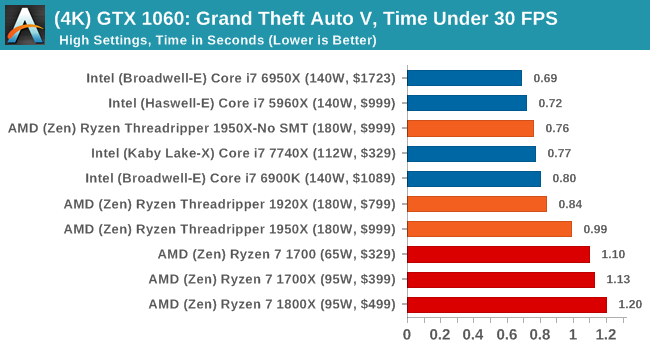
Sapphire Nitro R9 Fury 4G Performance
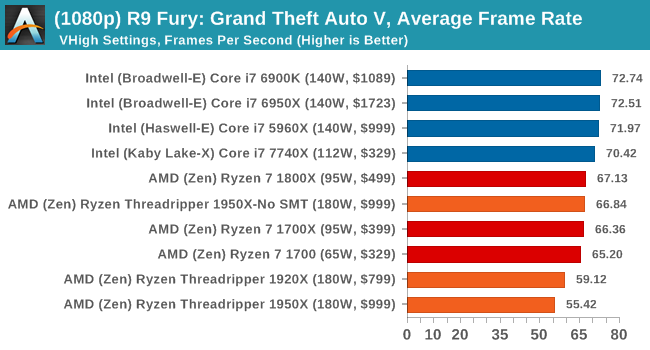
1080p

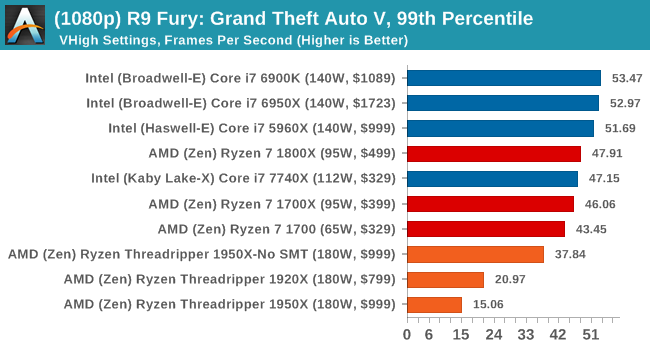
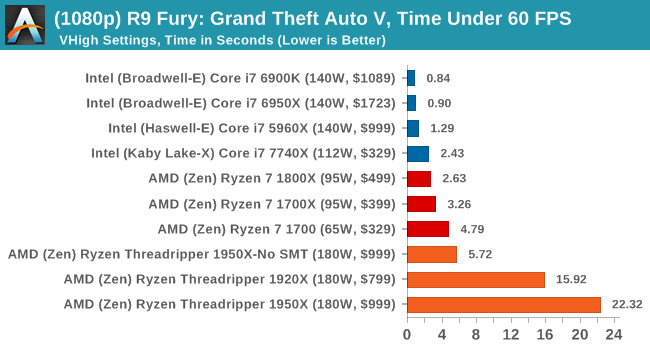
4K
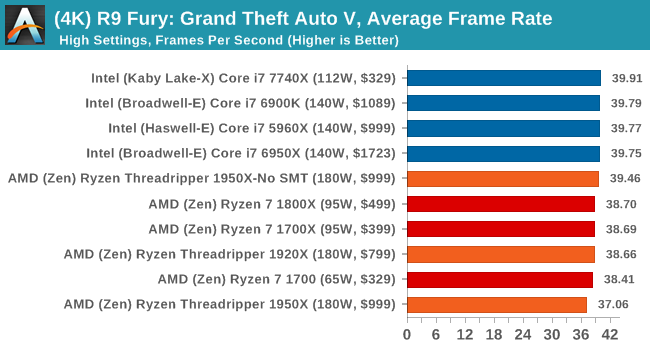
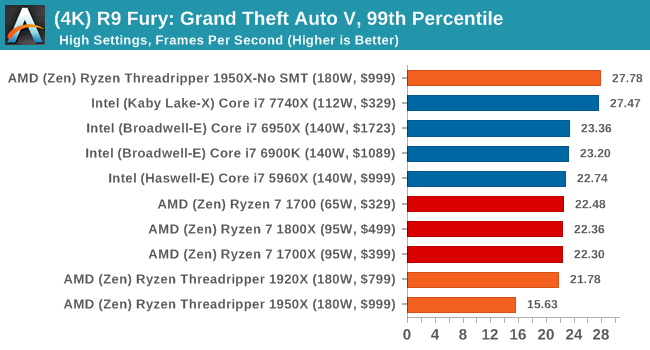
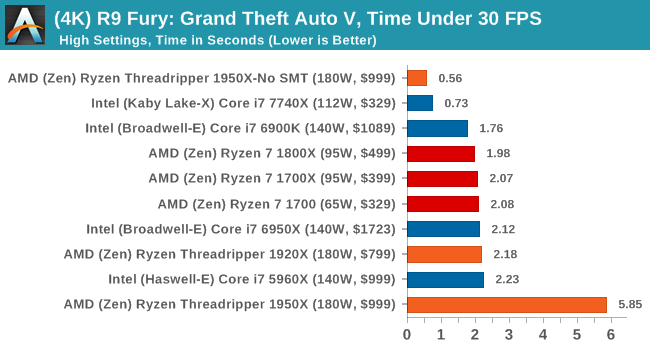
Sapphire Nitro RX 480 8G Performance
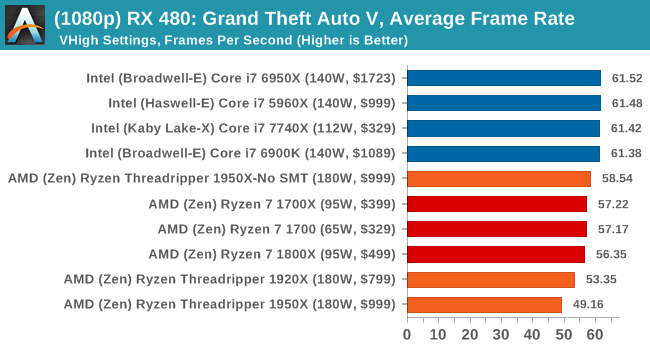
1080p

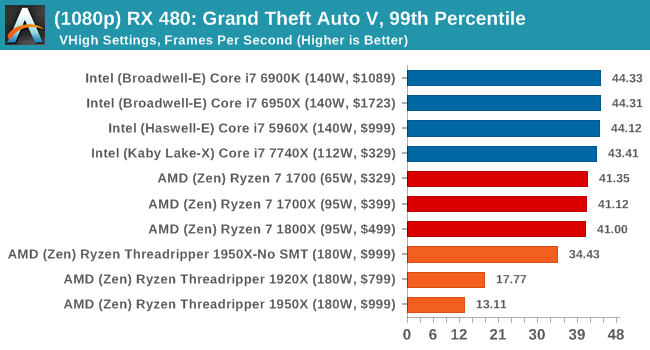
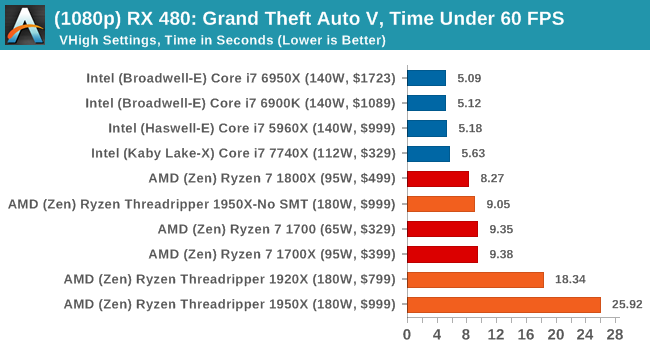
4K
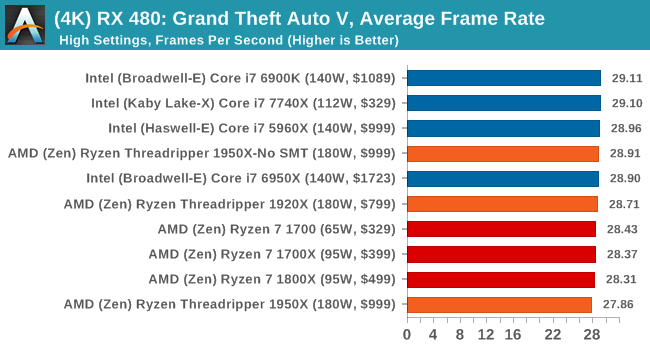
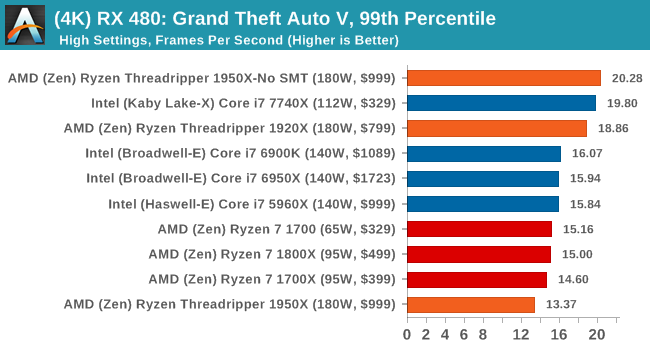
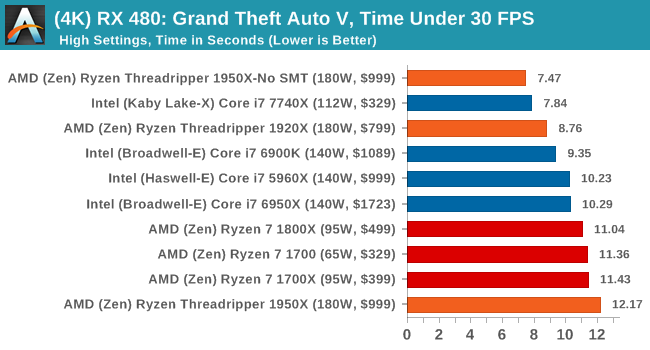
Depending on the CPU, for the most part Threadripper performs near to Ryzen or just below it.













347 Comments
View All Comments
goldgrenade - Thursday, January 4, 2018 - link
Idk, I use my 1920x for gaming and working, and... really everything. Second best CPU on the market with 1950x beating it out unless you can't get enough cooling.LOVE this CPU.
rauelius - Thursday, August 17, 2017 - link
I really want to build a 1920x1080 build.goku4liv - Saturday, August 19, 2017 - link
21/08/2017 INTEL LAUNCH 8 SERIES OF CPU................. AMD DEAD !!goldgrenade - Thursday, January 4, 2018 - link
HAHAHAHA xDHope you invested in AMD despite your comment. Looks like my gut instinct in buying AMD since 2009 was right. Intel chips have a security flaw, that when fixed for series 8 and 9 will remove approximately 30% of performance...
So who has the best chip now? Take 30% off any Intel benchmark against its then AMD rival and see which one would have been better.
Draven31 - Saturday, August 19, 2017 - link
NUMA appeared in Windows machines in 1998/1999 with the SGI Visual PC (which, yes, was a windows machine) and iirc, a workstation from Intergraph about the same time.halotron - Friday, March 16, 2018 - link
The benchmark Chromium Compile is excellent!Please do that for the next 2000-series of Ryzen/Threadripper as well.
Thanks